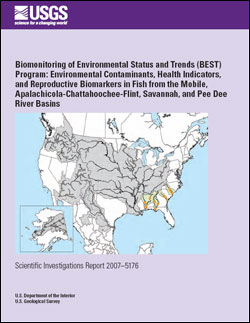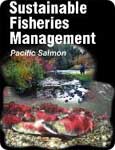- Home
- About S&T
- Taxa/Organisms
- Ecosystems
- Issues
- Methods & Tools
- Reports & Publications
- Location
- Search
2009 | Publisher: Other (American Fisheries Society (AFS)) | Format: URL
fresc.usgs.gov — USGS aquatic ecologist Jason Dunham and co-authors contributed a chapter about sampling coldwater fish in wadeable streams to a new book that details common methods, protocols, and guidelines for sampling fish across North America. Topics include three common sampling methods: electrofishing, snorkeling, and nest counts. Each method provides More...

2009 | Publisher: USGS | Format: URL
pubs.usgs.gov — Beulah Reservoir on the north fork of the Malheur River in northeastern Oregon provides irrigation water to nearby farms and ranches and supports an adfluvial population of bull trout (Salvelinus confluentus), which are listed as threatened under the Endangered Species Act. Water management in Beulah Reservoir results in seasonal and annual More...

2009 | Publisher: USGS | Science Center: Fort Collins Science Center (FORT, Ft. Collins) | Format: URL
www.fort.usgs.gov — Riparian vegetation composition, structure and abundance are governed to a large degree by river flow regime and flow-mediated fluvial processes. Streamflow regime exerts selective pressures on riparian vegetation, resulting in adaptations (trait syndromes) to specific flow attributes. Widespread modification of flow regimes by humans has resulted More...

2007 | Publisher: Other Federal Agency (United States Forest Service) | Format: .PDF
www.fs.fed.us — This journal article, published by Ecosystems Journal, discusses the influences of wildfire and channel reorganization on spatial and temporal variation in stream temperature and the distribution of fish and amphibians. Scientists studied stream temperatures in relation to wildfire in small streams in the Boise River Basin, located in central More...

2007 | Publisher: USGS | Format: .PDF
pubs.usgs.gov — Ospreys are large fish-eating birds of prey that live along seacoasts, lakes, and rivers. Three times since 1977, USGS zoologist Chuck Henny has led an international team to survey ospreys and other water birds that nest in northwestern Mexico. This USGS report details the long-term dataset and estimates on regional population trends.

2007 | Publisher: USGS | Format: URL
pubs.usgs.gov — This report documents the spatial trends in accumulative contaminants, health indicators, and reproductive biomarkers in Largemouth bass (Micropterus salmoides) and common carp (Cyprinus carpio) in the southeastern United States to document.

Publisher: USGS | Science Center: Alaska Science Center (ASC, Anchorage) | Format: URL
www.absc.usgs.gov — This book is the edited proceedings of a conference ("Toward Sustainable Fisheries: Balancing the Conservation and Use of Salmon and Steelhead in the Pacific Northwest"), held in Victoria, British Columbia in April 1996. "Sustainable fisheries" in this context was defined as "the conditions that support healthy, diverse, and productive ecosystems, More...

Publisher: USGS | Format: URL
pubs.usgs.gov — This report summarizes the findings of a study conducted as a pilot for part of a park-wide monitoring program being developed for the Ozark National Scenic Riverways (ONSR) of southeastern Missouri. The objective was to evaluate using crayfish (Orconectes spp.) and Asian clam (Corbicula fluminea) for monitoring concentrations of metals associated More...
